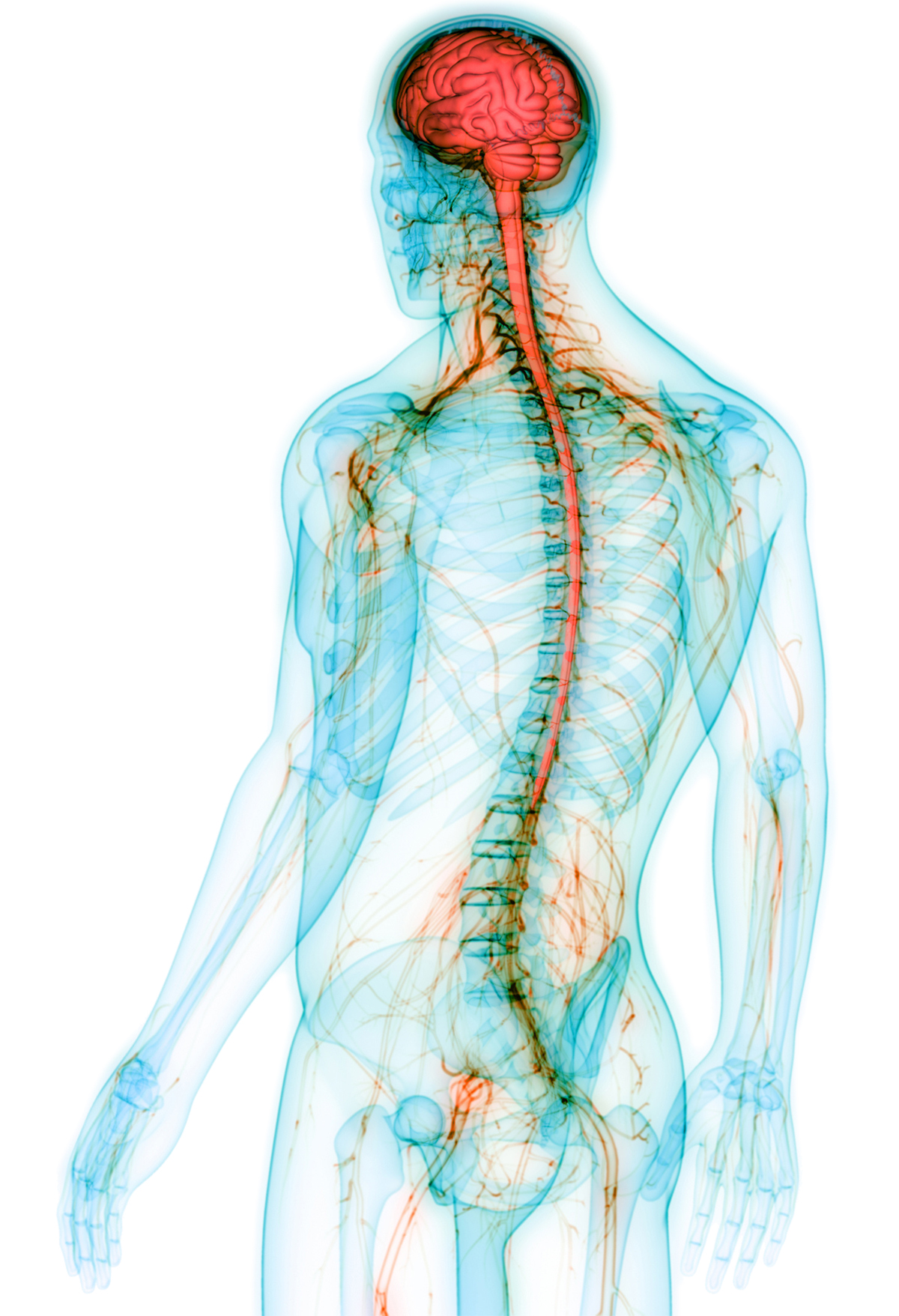On Your Nerves
Let’s call attention to the body’s complex nervous system.

Talking about the nervous system may bring to mind spine-tingling memories of anxiety and rapid bodily responses to stress, but there’s more to this intricate bundle of fibers.
The nervous system is a complex circuitry of cells called neurons, which transmit signals between different parts of the body. As the internal communication network, this comprehensive wiring controls all of the body’s responses and functions, including the ability to move, breathe, see and think.
The nervous system has two main components:
- The central nervous system (CNS) includes the brain, spinal cord and nerves. The CNS evaluates information and triggers a response from the body.
- The peripheral nervous system (PNS) is made up of sensory neurons throughout the body. The PNS monitors internal and external conditions and sends signals to the CNS (Barclay 2020; Zimmermann 2018).
The PNS also contains
- the somatic nervous system, which stimulates skeletal muscles; and
- the autonomic nervous system, which controls visceral and cardiac muscle tissue, initiates the body’s sympathetic “fight-or-flight” response during stress, and manages the body’s parasympathetic “rest-and-digest” response when the body is relaxed (Barclay 2020).
Read on to receive more compelling information about the nervous system:
- Neurons transmit signals through thin fibers called axons, which cause the release of chemicals known as neurotransmitters and form connections called synapses. The average human brain contains more than 100 trillion of these neural connections (Zimmermann 2018).
- There are about 100 billion neurons in the brain and 13.5 million in the spinal cord (Cirino 2017).
- The entire communication process between synapses and cells is the fastest trans-mission in the human body. Signals travel along an alpha motor neuron in the spinal cord at 268 miles per hour (Zimmermann 2018)!
- Healthy diets, such as those high in omega-3 fatty acids and curcumin, and exercise have been shown to improve neuronal function and plasticity in the brain and spinal cord (Gomez-Pinilla & Gomez 2011).
- Research shows that leg exercises benefit the nervous system by sending signals to the brain that are critical for producing healthy neural cells (ScienceDaily 2018).
- Common issues people have with their nervous systems include pain, often nerve-related, and functional difficulties, resulting in conditions like epilepsy, Parkinson’s disease and multiple sclerosis (Zimmermann 2018).
- Many yoga practices—including restorative asanas, slow breathing, meditation and guided imagery—increase PNS activation, helping to calm and regulate the nervous system (McCall 2017).
Sarah Kolvas
Sarah Kolvas is the content manager for IDEA.







